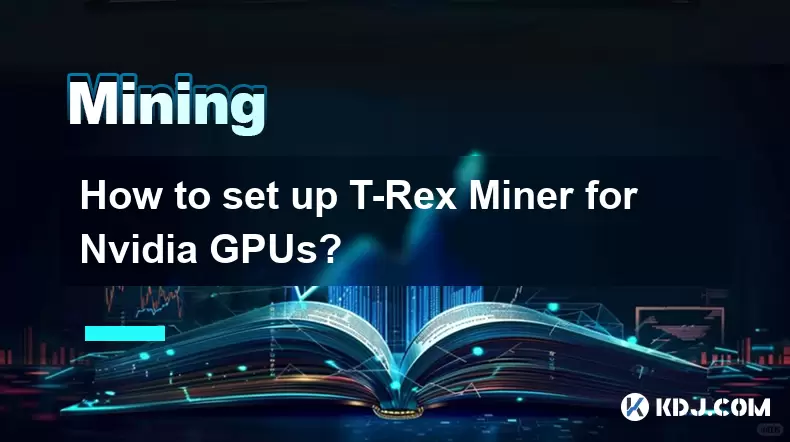-
 Bitcoin
Bitcoin $117600
0.25% -
 Ethereum
Ethereum $4424
0.10% -
 XRP
XRP $3.101
0.50% -
 Tether USDt
Tether USDt $1.001
-0.01% -
 BNB
BNB $836.2
1.26% -
 Solana
Solana $188.8
2.11% -
 USDC
USDC $1.000
0.01% -
 Dogecoin
Dogecoin $0.2301
0.57% -
 TRON
TRON $0.3485
-1.00% -
 Cardano
Cardano $0.9209
-1.34% -
 Hyperliquid
Hyperliquid $46.72
-1.19% -
 Chainlink
Chainlink $22.62
4.84% -
 Stellar
Stellar $0.4275
-0.38% -
 Sui
Sui $3.761
1.91% -
 Bitcoin Cash
Bitcoin Cash $586.7
-0.25% -
 Ethena USDe
Ethena USDe $1.001
0.01% -
 Hedera
Hedera $0.2510
2.06% -
 Avalanche
Avalanche $24.21
2.22% -
 Litecoin
Litecoin $119.7
1.07% -
 Toncoin
Toncoin $3.450
1.06% -
 UNUS SED LEO
UNUS SED LEO $9.411
-0.93% -
 Shiba Inu
Shiba Inu $0.00001298
1.20% -
 Uniswap
Uniswap $10.98
3.25% -
 Polkadot
Polkadot $3.961
2.16% -
 Dai
Dai $1.000
0.00% -
 Bitget Token
Bitget Token $4.642
0.95% -
 Cronos
Cronos $0.1514
0.57% -
 Ethena
Ethena $0.7290
3.78% -
 Monero
Monero $254.1
7.69% -
 Pepe
Pepe $0.00001102
2.47%
What types of Bitcoin miners are there? Which coins are suitable for ASIC miners?
Bitcoin mining has evolved from CPU to GPU and now ASIC miners, each with unique pros and cons. ASICs are ideal for mining BTC, BCH, LTC, and DASH.
May 09, 2025 at 04:35 pm

Bitcoin mining has evolved significantly since its inception, with various types of miners emerging to meet the demands of the cryptocurrency network. Understanding the different types of Bitcoin miners and the coins suitable for ASIC miners is crucial for anyone looking to engage in cryptocurrency mining. This article will delve into these topics, providing a detailed overview of the mining landscape.
Types of Bitcoin Miners
There are primarily three types of Bitcoin miners: CPU miners, GPU miners, and ASIC miners. Each type has its own set of characteristics, advantages, and disadvantages.
CPU Miners
CPU miners were the first type of miners used in the Bitcoin network. They utilize the central processing unit (CPU) of a computer to solve the cryptographic puzzles required to mine Bitcoin.
- Advantages: CPU mining is accessible to anyone with a computer, making it the easiest entry point into mining.
- Disadvantages: CPU mining is extremely slow and inefficient compared to other methods. It is no longer profitable for mining Bitcoin due to the increased difficulty of the network.
GPU Miners
GPU miners use graphics processing units (GPUs), which are significantly more powerful than CPUs for mining purposes. GPUs were introduced as an alternative to CPUs when the latter became too slow.
- Advantages: GPUs offer a higher hash rate and are more efficient than CPUs. They are also versatile, as they can be used for mining other cryptocurrencies.
- Disadvantages: While more efficient than CPUs, GPUs are still not as powerful as ASICs for Bitcoin mining. They also consume more electricity and generate more heat.
ASIC Miners
ASIC miners (Application-Specific Integrated Circuit) are specialized hardware designed specifically for mining cryptocurrencies. They are the most powerful and efficient type of miner available.
- Advantages: ASICs provide the highest hash rate and are the most energy-efficient option for mining Bitcoin. They are designed to perform only one task, making them highly optimized for mining.
- Disadvantages: ASICs are expensive and can become obsolete quickly as new models are released. They are also less versatile, as they are typically designed for mining a specific cryptocurrency.
Which Coins Are Suitable for ASIC Miners?
ASIC miners are highly specialized and are typically designed to mine specific cryptocurrencies. Here are some of the coins that are suitable for ASIC miners:
Bitcoin (BTC)
Bitcoin is the most well-known cryptocurrency and the primary target for ASIC miners. Bitcoin ASICs are designed to solve the SHA-256 algorithm used by the Bitcoin network.
- Advantages: Bitcoin has the highest market capitalization and liquidity, making it a stable choice for miners.
- Disadvantages: The high difficulty of the Bitcoin network means that only the most powerful ASICs can be profitable.
Bitcoin Cash (BCH)
Bitcoin Cash is a fork of Bitcoin and also uses the SHA-256 algorithm. ASIC miners designed for Bitcoin can also mine Bitcoin Cash.
- Advantages: Bitcoin Cash has a lower difficulty than Bitcoin, potentially making it more profitable for miners with less powerful ASICs.
- Disadvantages: The market for Bitcoin Cash is smaller than Bitcoin, which can affect liquidity and price stability.
Litecoin (LTC)
Litecoin uses the Scrypt algorithm, which is different from the SHA-256 algorithm used by Bitcoin. There are ASIC miners specifically designed for mining Litecoin.
- Advantages: Litecoin has a well-established network and is widely accepted. It also has a lower difficulty than Bitcoin, making it more accessible for miners.
- Disadvantages: The market for Litecoin is smaller than Bitcoin, which can impact profitability.
Dash (DASH)
Dash also uses the X11 algorithm, for which there are ASIC miners available. Dash is known for its focus on privacy and speed.
- Advantages: Dash offers features like instant transactions and private transactions, which can be attractive to users and miners.
- Disadvantages: The market for Dash is smaller than Bitcoin, which can affect its profitability and liquidity.
How to Choose the Right ASIC Miner
Choosing the right ASIC miner involves considering several factors, including hash rate, power consumption, and cost. Here are some steps to help you make an informed decision:
- Research the Hash Rate: The hash rate determines how many calculations the miner can perform per second. A higher hash rate generally means more potential for mining rewards.
- Evaluate Power Consumption: ASIC miners can consume a significant amount of electricity. It's important to calculate the cost of electricity and compare it to the potential mining rewards.
- Consider the Cost: ASIC miners can be expensive, so it's crucial to consider the initial investment and the potential return on investment.
- Check Compatibility: Ensure that the ASIC miner is compatible with the cryptocurrency you want to mine. Some ASICs are designed for specific algorithms and may not be suitable for other coins.
Setting Up an ASIC Miner
Setting up an ASIC miner involves several steps, from unboxing to connecting to a mining pool. Here's a detailed guide on how to set up an ASIC miner:
- Unbox and Inspect: Carefully unbox the ASIC miner and inspect it for any damage. Ensure all components are included.
- Connect to Power: Connect the ASIC miner to a power supply. Ensure that the power supply meets the miner's requirements.
- Connect to the Internet: Use an Ethernet cable to connect the ASIC miner to your router or modem. A stable internet connection is crucial for mining.
- Configure the Miner: Use the miner's interface to configure the settings. This typically involves entering the pool address, username, and password.
- Join a Mining Pool: Most miners join a mining pool to increase their chances of earning rewards. Choose a reputable pool and follow their instructions for joining.
- Start Mining: Once everything is set up, start the miner and monitor its performance. Ensure that it is hashing at the expected rate and that the temperature remains within safe limits.
Maintaining and Optimizing ASIC Miners
Maintaining and optimizing ASIC miners is essential for ensuring their longevity and profitability. Here are some tips for maintaining and optimizing your ASIC miners:
- Regular Cleaning: Dust and debris can affect the performance of ASIC miners. Regularly clean the fans and vents to ensure proper airflow.
- Monitor Temperature: High temperatures can damage ASIC miners. Use software to monitor the temperature and ensure that it remains within safe limits.
- Update Firmware: Manufacturers often release firmware updates to improve performance and fix bugs. Regularly check for and install these updates.
- Optimize Power Settings: Some ASIC miners allow you to adjust power settings to balance performance and energy consumption. Experiment with different settings to find the optimal configuration.
Frequently Asked Questions
Q: Can I use an ASIC miner for multiple cryptocurrencies?
A: It depends on the ASIC miner and the cryptocurrencies you want to mine. Some ASICs are designed for specific algorithms and can only mine cryptocurrencies that use those algorithms. For example, a Bitcoin ASIC can mine Bitcoin and Bitcoin Cash, but not Litecoin, which uses a different algorithm.
Q: How long does it take to break even on an ASIC miner?
A: The time it takes to break even on an ASIC miner depends on several factors, including the cost of the miner, electricity costs, and the current price of the cryptocurrency. It's important to calculate these factors before investing in an ASIC miner.
Q: Are there any risks associated with ASIC mining?
A: Yes, there are several risks associated with ASIC mining. These include the potential for the cryptocurrency price to drop, the risk of hardware failure, and the possibility of the mining difficulty increasing, which can reduce profitability.
Q: Can I mine cryptocurrencies other than Bitcoin with a GPU?
A: Yes, GPUs are versatile and can be used to mine a variety of cryptocurrencies. Some popular cryptocurrencies that can be mined with GPUs include Ethereum, Monero, and Zcash.
Disclaimer:info@kdj.com
The information provided is not trading advice. kdj.com does not assume any responsibility for any investments made based on the information provided in this article. Cryptocurrencies are highly volatile and it is highly recommended that you invest with caution after thorough research!
If you believe that the content used on this website infringes your copyright, please contact us immediately (info@kdj.com) and we will delete it promptly.
- Kazakhstan's Crypto Leap: Bitcoin ETF and Central Asia's Digital Finance Future
- 2025-08-13 12:45:19
- BlockDAG Presale Blazes Past $371M: Fundraising Frenzy Fuels Crypto Sensation
- 2025-08-13 13:05:21
- Meme Coins: Chasing the 2025 Surge – Which Will Moonshot?
- 2025-08-13 10:25:23
- Bitcoin's Wild Ride: Rally, Pullback, and What's Next
- 2025-08-13 10:25:23
- Bitcoin, Bitmax, and Institutional Demand: A New Era of Crypto Investment
- 2025-08-13 10:45:12
- Solana, ROAM, and Airdrops: What's the Buzz in 2025?
- 2025-08-13 11:35:13
Related knowledge

How to configure Phoenix Miner for AMD GPUs?
Aug 11,2025 at 03:21am
Understanding Phoenix Miner and Its Compatibility with AMD GPUsPhoenix Miner is a lightweight, high-performance Ethereum mining software designed for ...

How to set up T-Rex Miner for Nvidia GPUs?
Aug 10,2025 at 12:07am
Understanding T-Rex Miner and Its Compatibility with Nvidia GPUsT-Rex Miner is a high-performance mining software designed specifically for Nvidia GPU...

What is "proof-of-work" and how does it relate to mining?
Aug 07,2025 at 02:03pm
Understanding the Concept of Proof-of-WorkProof-of-work (PoW) is a consensus mechanism used in blockchain networks to validate transactions and secure...

How to choose a crypto wallet for your mined coins?
Aug 13,2025 at 11:36am
Understanding the Types of Crypto Wallets for Mined CoinsWhen selecting a crypto wallet for your mined coins, the first step is to understand the diff...

What are the differences between mining on Windows vs. Linux?
Aug 06,2025 at 11:29pm
Overview of Cryptocurrency Mining PlatformsCryptocurrency mining involves using computational power to solve complex cryptographic puzzles and validat...

How to use an old computer for cryptocurrency mining?
Aug 07,2025 at 12:42pm
Understanding the Feasibility of Using an Old Computer for MiningUsing an old computer for cryptocurrency mining may seem outdated, but it is still te...

How to configure Phoenix Miner for AMD GPUs?
Aug 11,2025 at 03:21am
Understanding Phoenix Miner and Its Compatibility with AMD GPUsPhoenix Miner is a lightweight, high-performance Ethereum mining software designed for ...

How to set up T-Rex Miner for Nvidia GPUs?
Aug 10,2025 at 12:07am
Understanding T-Rex Miner and Its Compatibility with Nvidia GPUsT-Rex Miner is a high-performance mining software designed specifically for Nvidia GPU...

What is "proof-of-work" and how does it relate to mining?
Aug 07,2025 at 02:03pm
Understanding the Concept of Proof-of-WorkProof-of-work (PoW) is a consensus mechanism used in blockchain networks to validate transactions and secure...

How to choose a crypto wallet for your mined coins?
Aug 13,2025 at 11:36am
Understanding the Types of Crypto Wallets for Mined CoinsWhen selecting a crypto wallet for your mined coins, the first step is to understand the diff...

What are the differences between mining on Windows vs. Linux?
Aug 06,2025 at 11:29pm
Overview of Cryptocurrency Mining PlatformsCryptocurrency mining involves using computational power to solve complex cryptographic puzzles and validat...

How to use an old computer for cryptocurrency mining?
Aug 07,2025 at 12:42pm
Understanding the Feasibility of Using an Old Computer for MiningUsing an old computer for cryptocurrency mining may seem outdated, but it is still te...
See all articles

























































































